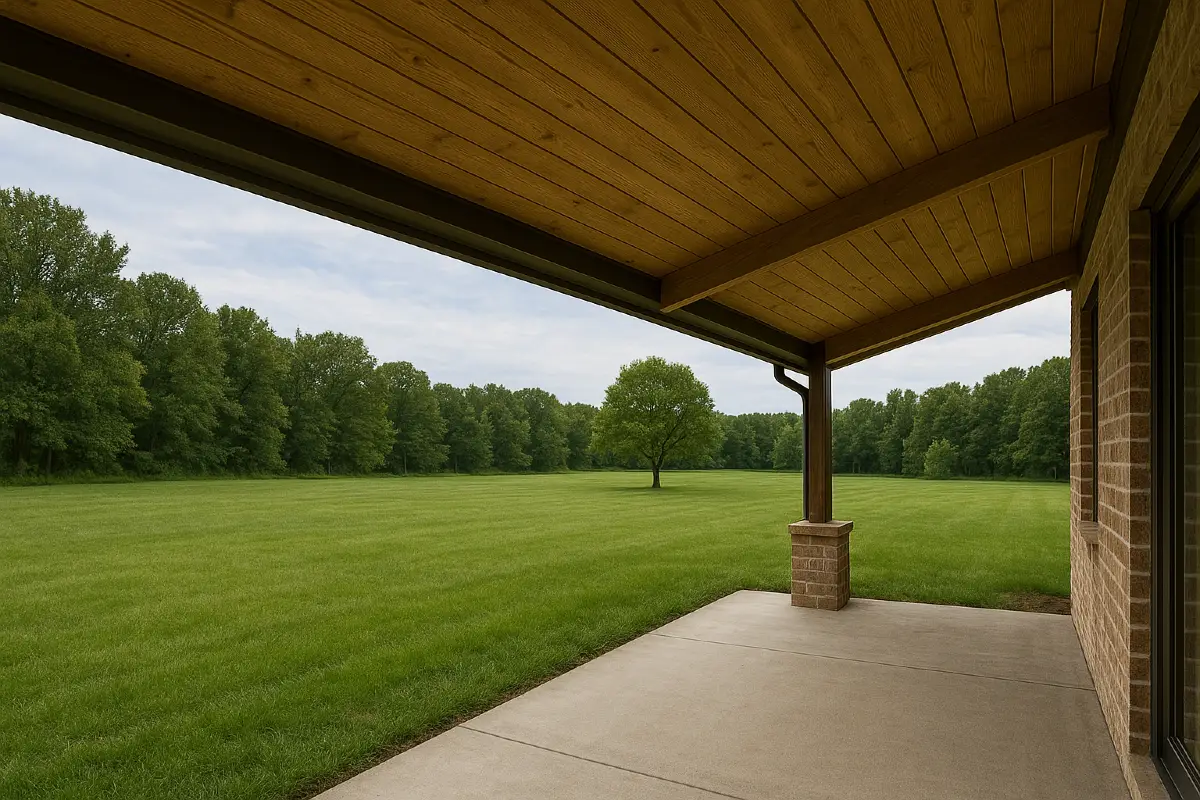The roof is not just a protective covering; it is a crucial aspect of building design that impacts both aesthetics and functionality. Among various roof components, overhangs play a vital role in safeguarding the building’s structure and enhancing its performance.
A well-designed roof overhang offers numerous structural benefits, from energy efficiency to improved architectural integrity. Understanding these advantages can help homeowners and builders make informed decisions when planning new roofs or renovating existing structures.
Understanding Roof Overhangs
Roof overhangs are extensions of the roof that extend beyond the walls of a building. They serve multiple functions, including protection against environmental elements like rain and sun. The longevity of a structure can be negatively impacted by moisture penetration and sun exposure, which overhangs help to reduce by establishing a physical barrier between the building and the outside environment. Well-designed overhangs contribute to improved indoor comfort.
Overhangs help keep the temperature inside a building more consistent during the warmer months by protecting windows from direct sunlight. For those considering their options for enhanced living spaces, whether you go now and choose your overhangs or do more research on energy-efficient materials, making informed decisions can pay off in the long run. They play a role in protecting exterior finishes, preventing premature deterioration of siding and trim.
In colder climates, roof overhangs can help direct snowmelt away from the foundation. This minimizes the risk of water pooling around the base of the structure. Properly sized overhangs can even reduce the need for costly cooling systems. With thoughtful planning, overhangs become both a practical and aesthetic asset to any building design.
The Role of Roof Overhangs in Water Management
One of the primary functions of roof overhangs is effective water management. Overhangs provide a means to channel water away from the foundation, preventing potential flooding and erosion. Overhangs protect the walls and keep moisture buildup from damaging them and necessitating costly repairs by diverting water runoff away from the building.
On sloped roofs, a larger overhang might be more effective in dealing with heavy rainfall. Overhangs can effectively divert rainwater by extending farther out, reducing the possibility of leaks and structural damage. This preventative measure is crucial in areas prone to heavy precipitation, where proper water management can significantly extend the lifespan of the building and maintain its structural integrity.
Impact on Energy Efficiency
The design of roof overhangs can considerably affect a building’s energy efficiency. The shading effects created by overhangs can help reduce the need for air conditioning in warmer months. According to the U.S. Department of Energy, strategic shading can lower cooling costs by as much as 30%. By designing overhangs that provide adequate shade during peak sun hours, homeowners can reduce reliance on artificial cooling systems, thus leading to lower energy bills.
In winter, the design can allow sunlight to enter the building, providing natural warmth. The correct balance can optimize energy output throughout the year. Homeowners benefit from reduced energy costs and diminished usage of resources. With increasing energy prices, enhanced efficiency still drives greater demand for smart building designs that incorporate effective overhangs.
Enhancing Property Value with Quality Design
Investing in a well-designed roof overhang may increase property value significantly. Aesthetically pleasing and functional designs appeal to potential buyers. A thoughtful roof design enhances curb appeal and implies a well-maintained property, which can favorably influence purchase decisions.
In addition, prospective buyers are increasingly looking for homes that offer energy-efficient features. A building equipped with an effective overhang may stand out in a competitive market, making it more attractive to environmentally conscious buyers. This trend indicates that a quality roof overhang serves both practical and aesthetic purposes, resulting in better resale value.
Architectural Integrity and Design Flexibility
Roof overhangs contribute to the architectural style of a building. They allow for creative expression that can make a structure unique. By incorporating various lengths, shapes, and materials, architects have the flexibility to design homes that fulfill functional requirements and achieve distinctive looks. Different styles of overhangs can complement various architectural themes, from modern to traditional.
With proper execution, they can unify disparate elements of a structure, leading to a cohesive appearance. As homeowners explore possibilities, it is beneficial to evaluate how roof overhangs can enhance the design with personalized touches that resonate with their vision. A well-executed roof overhang is more than a functional element; it can finalize the aesthetic expression of a home while delivering practical benefits.
A well-designed roof overhang provides numerous structural benefits, such as protection against water damage, energy efficiency, and enhanced property value. Properly executed overhangs contribute to the architectural integrity of a structure.
With thoughtful consideration in the design process, these extensions can significantly contribute to the longevity and performance of a building. Investing time and resources in this important feature can yield long-term advantages.
